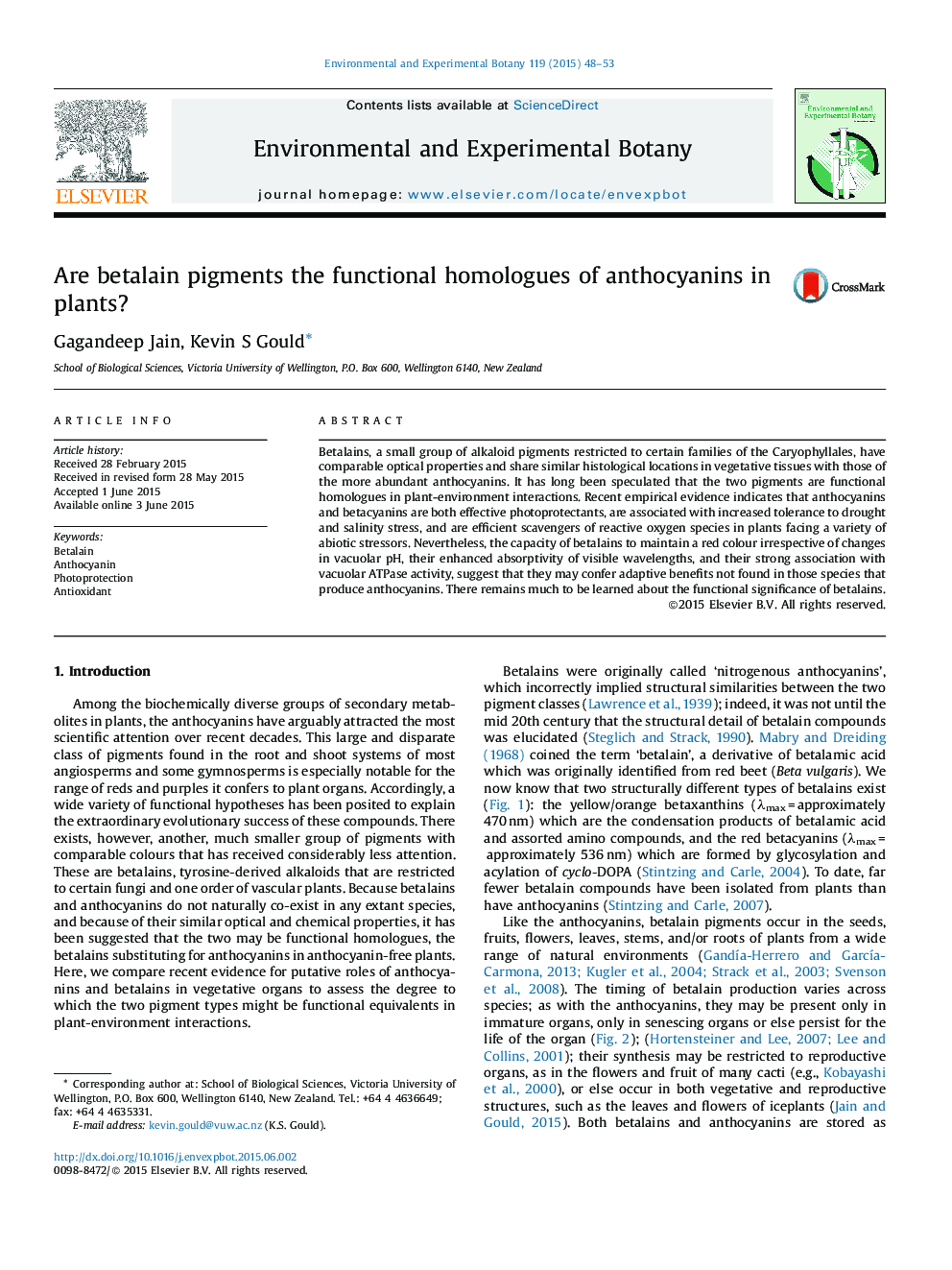| Article ID | Journal | Published Year | Pages | File Type |
|---|---|---|---|---|
| 4554221 | Environmental and Experimental Botany | 2015 | 6 Pages |
•Betalains and anthocyanins have similar optical and chemical properties.•Both are effective photoprotectants and efficient scavengers of reactive oxygen species in plants.•The unique properties of betalains viz pH stability, higher light absorptivity and Na+ sequestration, may confer adaptive benefits to plants.
Betalains, a small group of alkaloid pigments restricted to certain families of the Caryophyllales, have comparable optical properties and share similar histological locations in vegetative tissues with those of the more abundant anthocyanins. It has long been speculated that the two pigments are functional homologues in plant-environment interactions. Recent empirical evidence indicates that anthocyanins and betacyanins are both effective photoprotectants, are associated with increased tolerance to drought and salinity stress, and are efficient scavengers of reactive oxygen species in plants facing a variety of abiotic stressors. Nevertheless, the capacity of betalains to maintain a red colour irrespective of changes in vacuolar pH, their enhanced absorptivity of visible wavelengths, and their strong association with vacuolar ATPase activity, suggest that they may confer adaptive benefits not found in those species that produce anthocyanins. There remains much to be learned about the functional significance of betalains.
